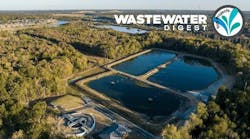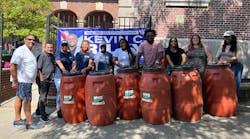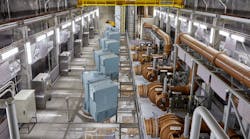What Does Storm Water Mean?
Storm water can be defined as the water that results from precipitation, which includes rainwater, subsoil water or spring water.
Storm water can be captured by separate storm sewers, sewage or drainage facilities, or conveyed by snow removal equipment.
According to the U.S. EPA, “when storm water is absorbed into soil, it is filtered and ultimately replenishes aquifers or flows into streams and rivers.”
When storm water overflows into storm drains, sewer systems and drainage ditches, there are significant impacts detrimental to the environment according to the EPA, including:
- Downstream flooding;
- Stream bank erosion;
- Increased turbidity from erosion;
- Habitat destruction;
- Combined storm and sanitary sewer system overflows;
- Infrastructure damage; and
- Contaminated streams, rivers and coastal water.
What is Storm Water Runoff?
Storm water runoff can contain pollutants including nitrogen and phosphorus. The EPA cites urban and suburban areas as producing more storm water runoff because these areas have larger quantities of paved and hard surfaces.
According to the Wisconsin Department of Natural Resources, there are many types of pollutants in storm water runoff, including: garbage, oil and grease, gasoline, sediment, road salt, heavy metals and more.
Is Rainwater the Same as Storm Water?
According to the Minnesota Stormwater Manual, rainwater is different from storm water. Rainwater is storm water runoff collected directly from roof surfaces. Rainwater typically has lower levels of pollutants so it requires less treatment.
Can Storm Water be Recycled?
According to the U.S. EPA, when storm water flows over hard surfaces directly into storm drains, there is an inability to filter out pollutants.
However, there are storm water and rainwater harvest and use systems.
A storm water harvesting and use system captures and retains storm water for beneficial use and potentially has four components including: a collection system; a storage unit treatment system; pre- and post-treatment if necessary; and the distribution system.
Combined Sewer Systems
According to the Water Environment Federation (WEF), in combined sewer systems, storm water flows with wastewater and is treated at a water resource recovery facility.
EPA states that “a combined sewer system collects rainwater runoff, domestic sewage, and industrial wastewater into one pipe.”
EPA's Combined Sewer Overflow (CSO) Control Policy offers guidance on how communities with CSOs can achieve Clean Water Act (CWA) compliance through the NPDES permitting program.
Nonpoint Source Pollution
According to EPA, nonpoint source pollution is reported as the leading remaining cause of water quality problems by states.
This pollution is the result of runoff, drainage, precipitation and more, and is specifically caused by rainfall or snow melt moving, picking up and carrying away pollutants.
The pollution is then deposited into lakes, rivers, wetlands, coastal waters and ground waters, impacting drinking water supplies, recreation, and more.
Storm Water Resources
The EPA has compiled lists of storm water best practice and maintenance manuals here and has a Storm Water Management Model (SWMM).






